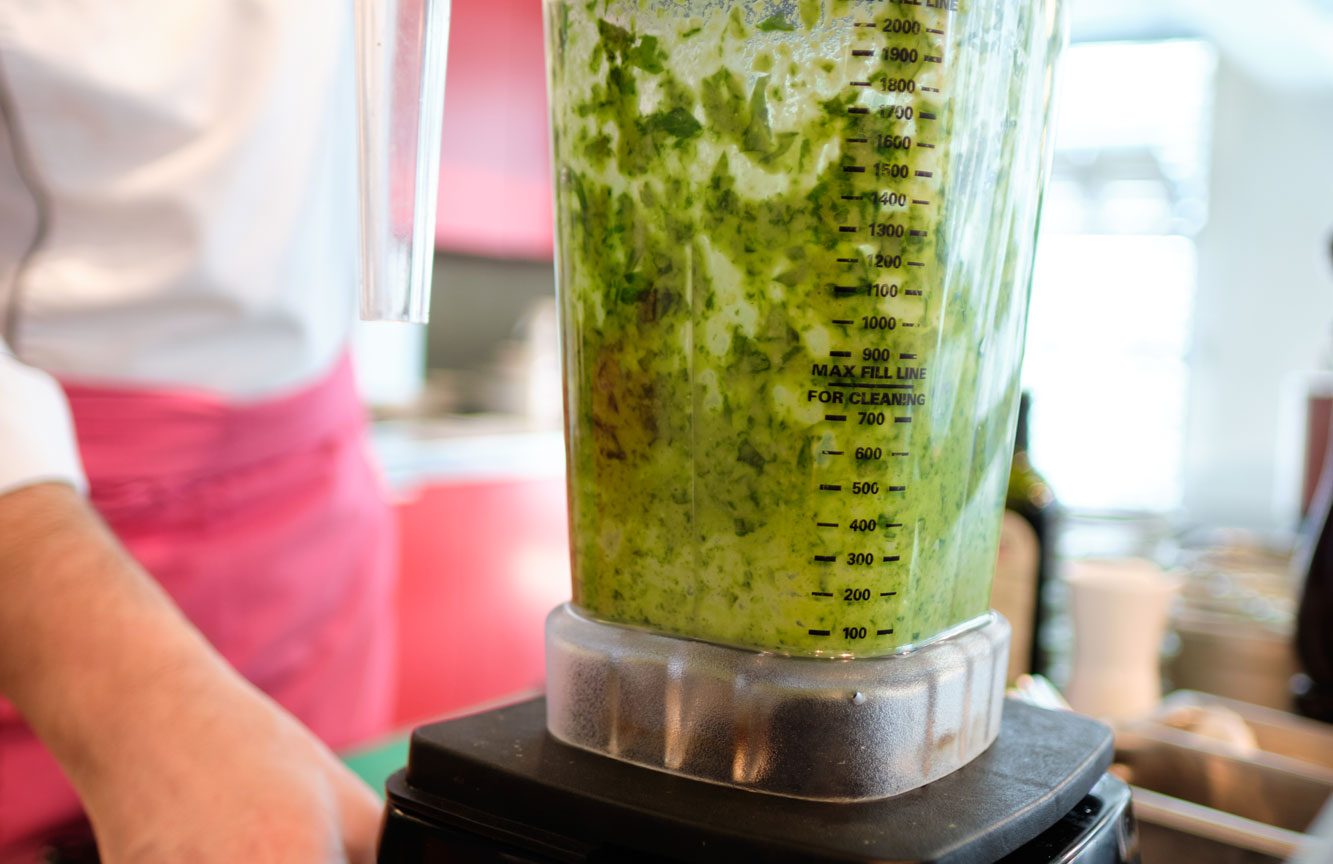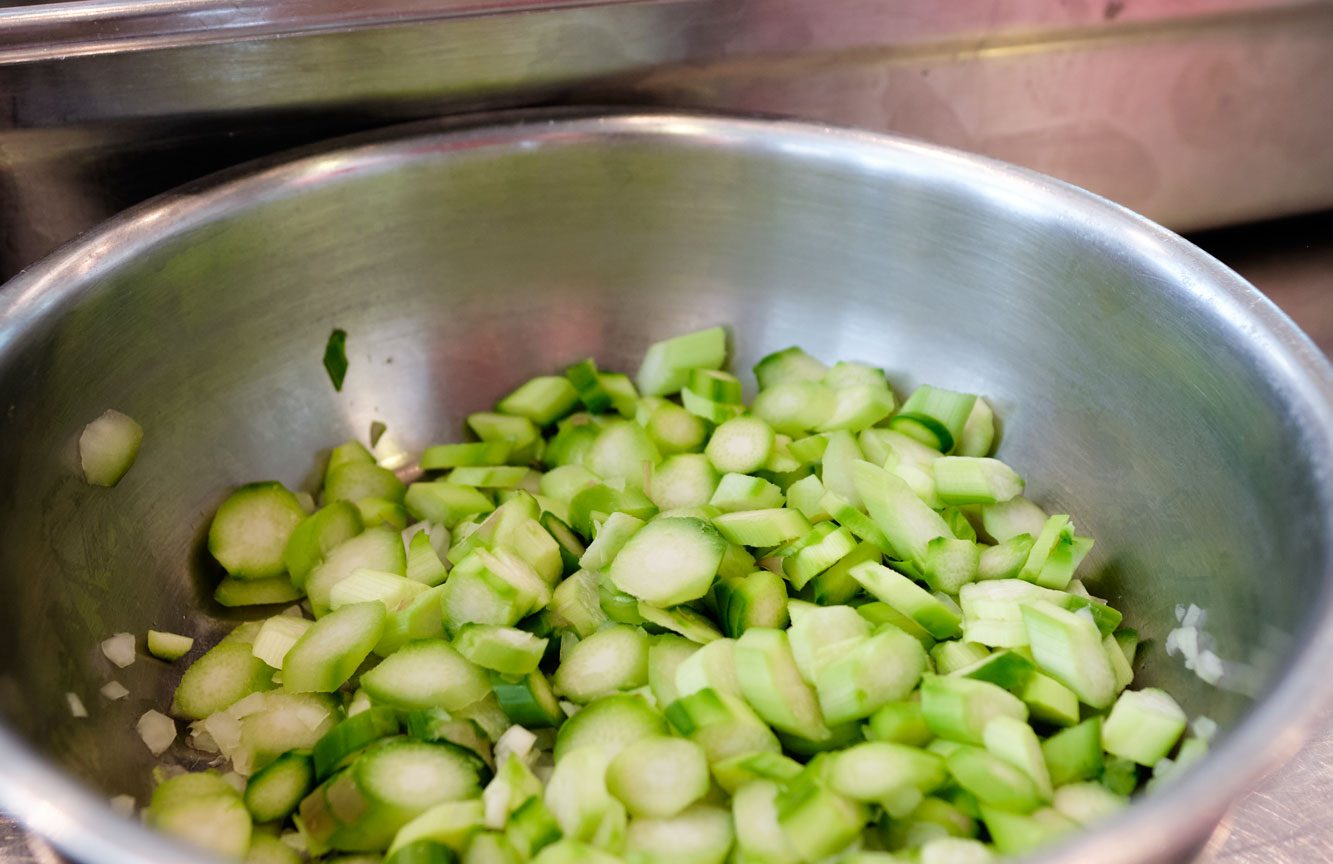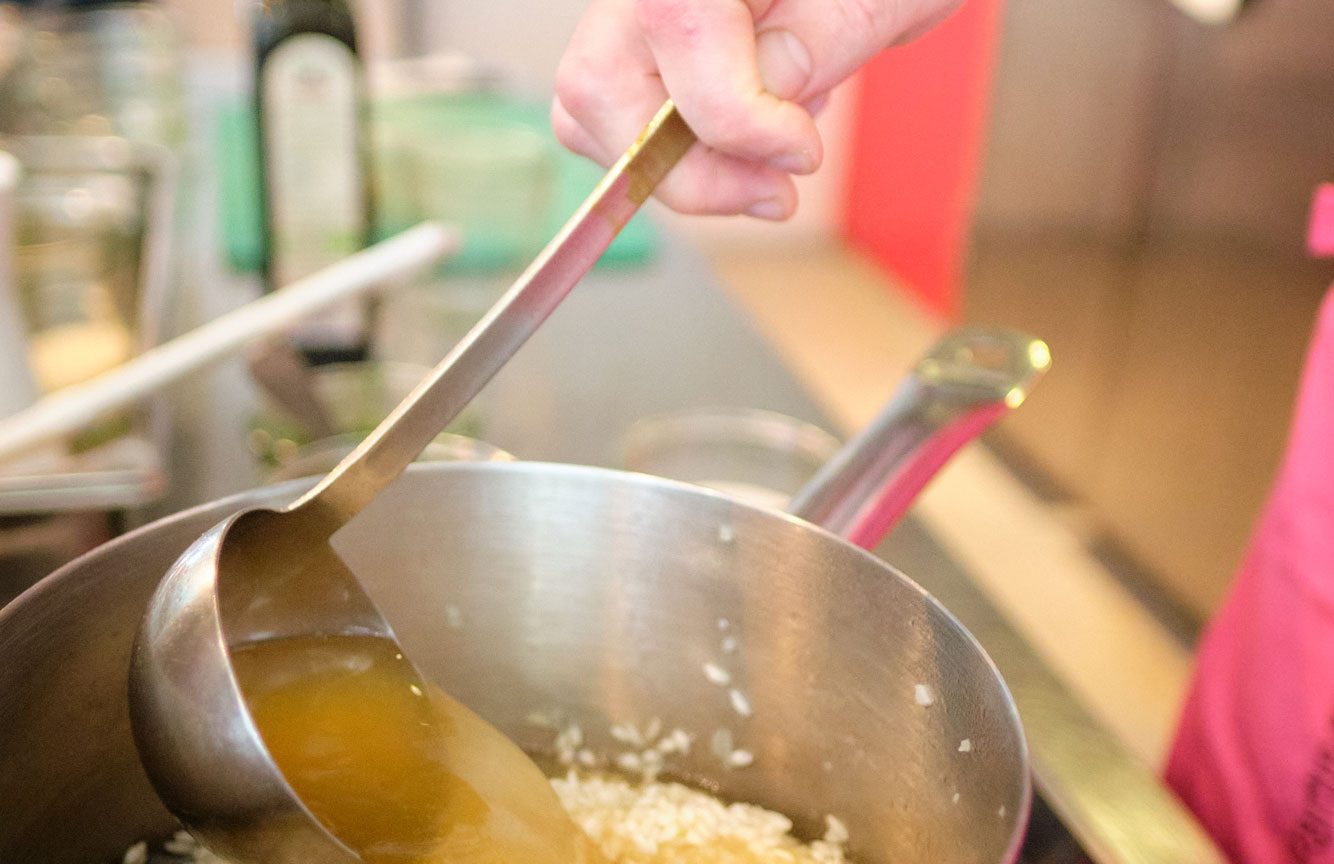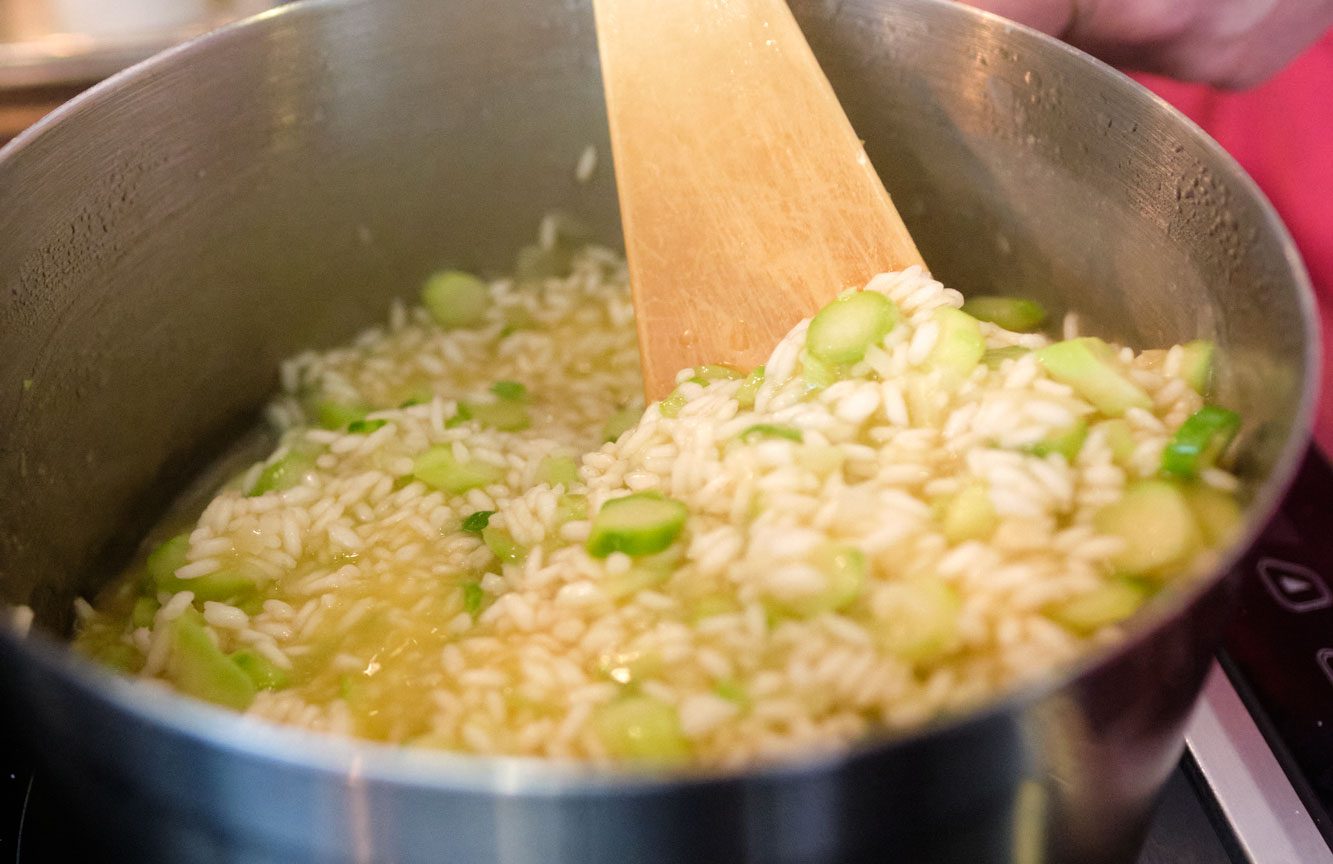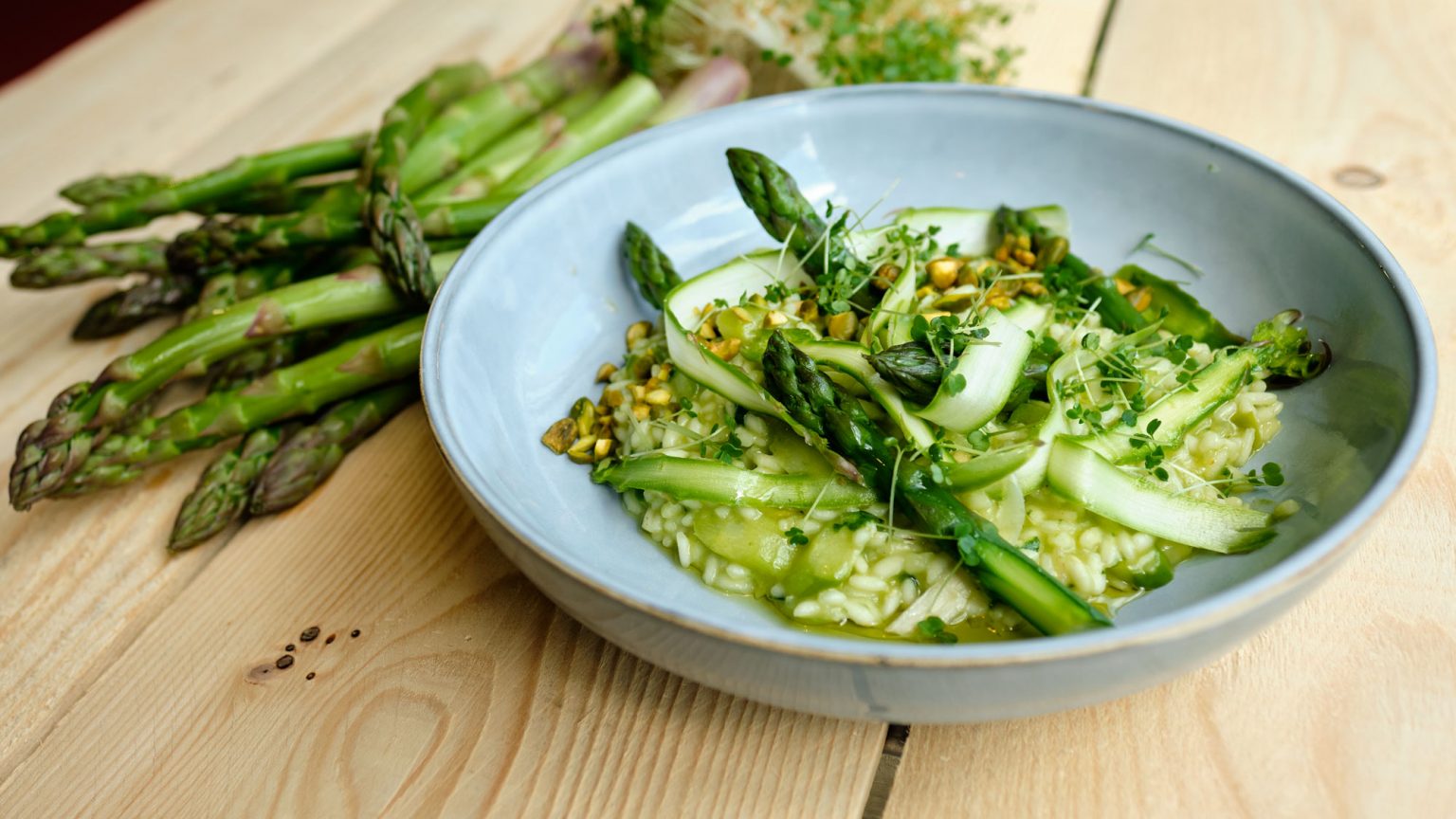Ingredients – serves 4
|
|
LA RECETTE
Wild garlic pesto
Using a food processor, blend together until smooth:
- 50g wild garlic
- 2 tablespoons olive oil
- 1 tablespoon grated Parmesan cheese
- 1 tablespoon hulled pistachios
Asparagus
Cut off and discard the tough bottom ends of the stalks. Remove the heads and set aside, and cut the stalks into 3-cm-long pieces.
Risotto
Heat the olive oil in a saucepan over medium-low heat.
Add the cut asparagus stalks (without the heads) and sauté for about 2 minutes, then remove and set aside.
Add a little more olive oil to the saucepan and cook the minced onion until it starts to “sweat.” Then add the Arborio rice and let it sauté while stirring often until the grains become translucent.
Add the white wine and stir until the liquid has completely evaporated.
Stirring constantly, add the vegetable stock progressively until the rice is covered with liquid
After about 10 minutes, add the asparagus heads and the sautéed stalks
Let the mixture simmer for about 10 more minutes, while continuing to stir, until the rice is tender but still firm (al dente)
Add the wild garlic pesto, butter and grated Parmesan cheese and mix together.
Check the texture and season to taste. The risotto should be somewhat creamy – if need be, add a bit more stock.
Serve immediately, adding a few shoots of arugula and the crushed pistachios as garnish.
BON APPÉTIT
By Nicola Salemme, Executive Chef at L’Ornithorynque
Asparagus
Whether you prefer it green or white, cooked or raw in a salad, asparagus can be prepared in a variety of ways. It livens up any dish, is an excellent source of vitamins and is the perfect choice for creating healthy, tasty meals.
Nutritional benefits
Asparagus is particularly rich in folate (vitamin B9) which is essential for cell regeneration and red blood cell synthesis. Five stalks of cooked asparagus provide about 25% of an adult’s daily folate requirement.
Cooking tends to boost the presence of some phenolic compounds. Overcooked asparagus, however, can be lower in flavonoids. Therefore, whether you boil, steam or microwave it, asparagus should be cooked for only a short time.
What to look for
Contrary to popular belief, thin asparagus stalks are not as tender as the thicker ones; the thin stalks have a higher proportion of ligneous fibers. When selecting asparagus, look for stalks where the tips are closed and compact.
Storage
The longer you keep asparagus before eating it, the more fibrous it becomes, particularly if you store it at room temperature. Its sugars quickly turn into starch and the texture becomes woody.
Storing asparagus in the refrigerator: Wrap the base of the asparagus bundle with a moist paper towel and place in a plastic bag. Or you can store it vertically in a jar with 5 cm of water at the bottom. Asparagus will keep for 1–2 weeks.
Storing asparagus in the freezer: Blanch the stalks for 3 minutes in boiling water before putting them in the freezer, where they will keep for about 8 months. They should be cooked without defrosting.
Dr. Maryam Yepes
nutriMenu.ch
